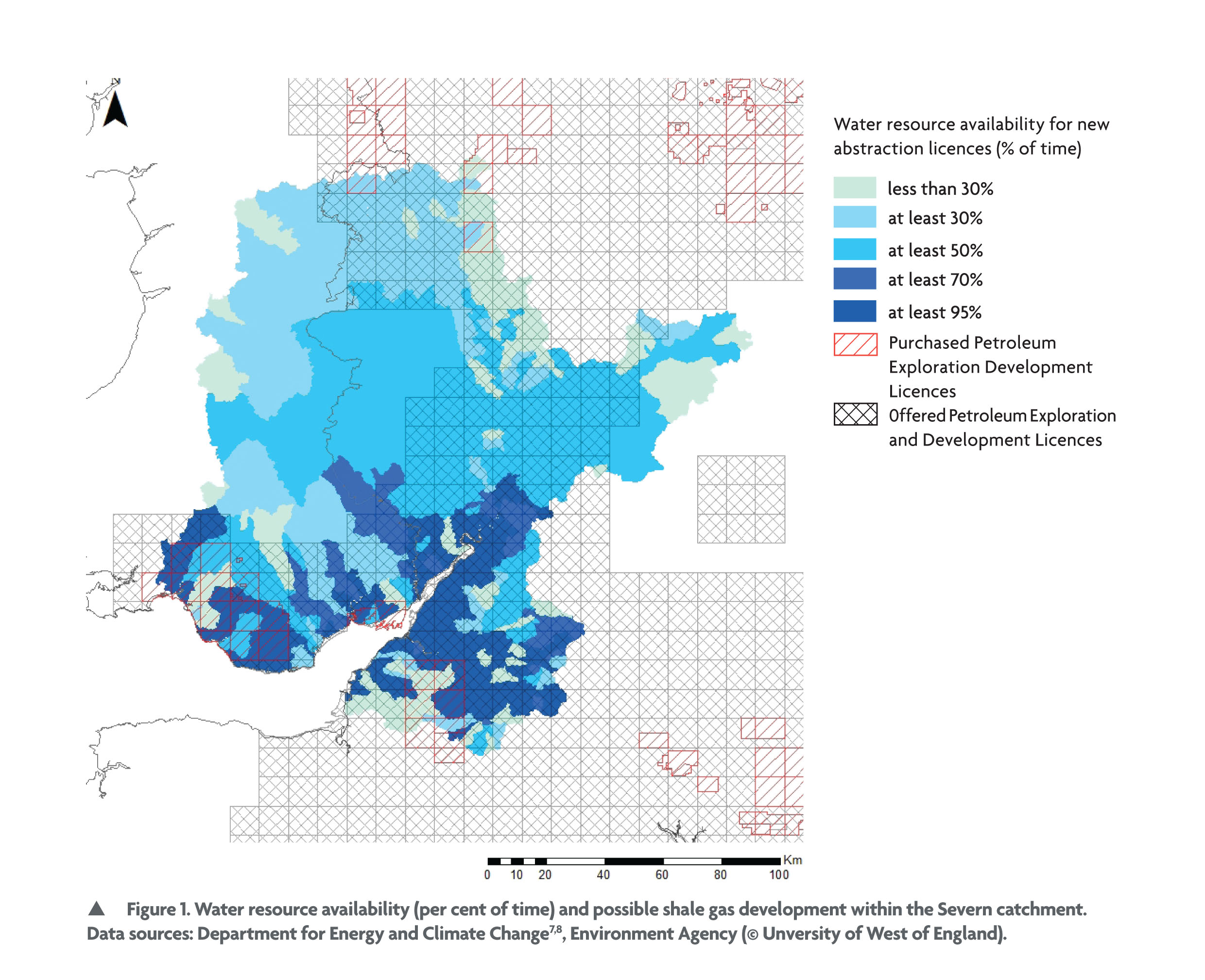environmental SCIENTIST | Water Security | October 2014
Although the global population growth rate is declining, the global population count is continuing to increase and is expected to reach 9.6 billion by 2050, with an estimated 70 per cent living in towns and cities1. The global trends of population growth, rapid urbanisation and rising living standards are placing increasingly competitive demands upon finite natural resources for agriculture, energy and industrial production. If these trends continue, by 2050 water demand is projected to increase by 55 per cent, energy demand is projected to increase by 80 per cent and food demand is projected to increase by 60 per cent2.
These resource-demand challenges will be primarily experienced in cities where the growing middle classes will be the main consumers of electricity, oil, food beverages, household appliances, cars and other goods and services3. The question is: how do we provide energy, water and food security for a growing population now and in a future that needs flexibility to adapt to a challenging and changing climate? And once we have figured out the answer to this, how do we balance these securities to ensure that we are not achieving one at the expense of another?
What is the Water–Energy–Food Nexus?
The nexus concept is not new. Environmental scientists and practitioners have been talking about this for years but using different terminology such as ‘integrated resource management’, or ‘systems thinking’. The nexus concept sits within very obvious day-to-day issues where we have numerous interdependent relationships such as:
- water for energy (e.g. thermal electric cooling and hydropower generation);
- energy for water (e.g. treatment and distribution of water);
- water for food (e.g. irrigation of crops);
- energy for food (e.g. processing, transportation, sanitation); and
- ‘food’ for energy (e.g. biofuels).
Ecosystems are critical to the nexus, and ecosystems services (natural infrastructure) underpin each of the three nexus strands. Without healthy ecosystems in well-functioning watersheds, the infrastructure built for irrigation, hydropower or municipal water supply does not function sustainably, and is unlikely to achieve the economic returns necessary to justify investments4.
Natural infrastructure does not replace the need for built infrastructure, and natural infrastructure can complement built infrastructure. For example, dams benefit from forests that stabilise soils and hold back erosion upstream. Lakes and wetlands provide water storage and therefore reduce the reservoir volume needed and thus the cost of built water storage.
The challenge of the nexus is not just about the interdependent relationships between water–energy–food but also involves the complex planetary drivers, pressures and challenges that influence these resources on different geographical scales (local, national, global), temporal scales (historical, current, future) and experiencing differing risks (political, economic, environmental).
The UK Climate Change Act (2008) places a commitment to achieve an 80 per cent reduction of greenhouse gases by 2050 based on 1990 levels. The UK Carbon Plan states that a major component of achieving this reduction will be “to make a transition to a low carbon economy while maintaining energy security” and “less reliance on imported fossil fuels and less exposure to higher and more volatile energy prices”.
Whereas the Carbon Plan is focused on mitigation, there is a noticeable lack of considered integration of climate adaptation, which will primarily have an impact on water and food. This document alone is a perfect example of a lack of nexus thinking and illustrates the fact that having water–energy–food as shared priorities does not mean that they will be equal priorities. Many practitioners view water security as the key component to the nexus and the focal point that will bring together the global challenges that the world economy will face in the coming decades.
The Nexus in Action (or Inaction) – Severn River Basin
The Severn is the longest river and third-largest basin in the UK, supporting 5 million people including the major urban conurbations of Coventry, Cardiff and Bristol. It supplies water to approximately 2 million households and 193,000 commercial operations and currently operates at 94 per cent of its abstraction potential. Recent projections suggest that this basin is going to experience substantial pressures in the coming years. For example a projected 20.1 per cent population growth in the UK by 20505 would see an intensification of agriculture in the Severn River Basin region accompanied by an increased water demand and abstraction uncertainty. Additionally, the river basin is no stranger to major flooding events as experienced in Gloucestershire in 2007 and more recently in Gloucestershire and Somerset in 2014.
The basin is of strategic importance to the UK’s energy security plans and low-carbon agenda as it has the potential for the generation of approximately 10–20 GW of electricity through projects such as the Severn Barrage and Hinckley Point C nuclear power plant, plus a possible 6–7 years of natural gas through shale gas exploitation6.
However, to achieve this target the underlying fundamental is water resource availability and in some instances this will require compromises. Data from the UK Catchment Abstraction Management Strategies indicate that large regions of the country have sufficient water resource availability less than 50 per cent of the time9. The overseas trade statistics show that over 50 per cent of the UK’s food is imported and in many cases from locations that will be vulnerable to climate change7. Additionally, the Department of Energy & Climate Change advise that the UK energy mix is going to be reliant on nuclear energy, renewables and natural gas in the future and arguably some of that natural gas may come from the UK’s own shale gas reserves.
-
Shale gas: extrapolating from published estimated shale gas reserves in the Bowland Hodder, there may be potential technically recoverable reserves of 578 bcm (billion cubic metres) within the Severn River Basin geographical area (see Figure 1). At the current UK rate of 85 bcm of natural gas usage per annum the approximated Severn shale gas would provide 6.8 years of natural gas. Yet to access this gas, assuming that we were able to exploit 20 per cent over the next 20 years, the estimated water withdrawn would be 270 ML per annum (equivalent to the water use of approximately 5,000 people per annum). However, between 20 and 80 per cent of this water withdrawn would be permanently consumed (i.e. would be trapped in the shale rock due to the hydraulic fracturing process) and therefore permanently lost to the immediate water environment and the hydro-geological cycle;
-
Nuclear power: the UK nuclear programme is to have 16 GW operational by 2030. Hinckley Point C will provide 3.26 GW and will be the first of the new generation of nuclear power plants to be operational by 2023. Located in West Somerset, the power plant will draw water from the Severn Estuary and will build cooling water tunnels and other infrastructure out into the estuary. Unlike the shale gas example, the key issues for this project are the potential impact that the power station will have on estuary habitats, through issues such as suspended sediment, variation to the estuary-water chemical quality and thermal regime, and the impact that the land infrastructure will have on groundwater levels, rather than sufficient water supply for cooling. Additionally, the Hinckley Point location is at high risk of flooding by 2080 and erosion. Given the power station’s location beside the Somerset flood plains, there has to be the additional requirement for elevated flood defences including the requirement for a 66 million gallon water lagoon (the annual water needs of approximately 5,500 people per annum).
-
Tidal energy: Numerous schemes have been examined in recent years in the Severn Estuary and the pros and cons of lagoon schemes versus barrage schemes have been well documented. Primary concerns cited include issues surrounding the cost associated with the schemes, the scale of the infrastructure required, and the associated environmental and economic risks. Therefore the Severn tidal energy agenda has remained relatively quiet since 2009. From a nexus perspective the key risks included environmental impacts on fisheries and the estuary ecosystem and accessibility to Bristol Port.
These three different low-carbon projects each bring their own nexus risks whether they are potential water loss from shale gas exploration or impact on estuary habitats and fisheries from nuclear and tidal schemes. The challenge is how to weigh and balance these issues to ensure that we are not trading off one security for another insecurity. The water and food strands of the nexus are inherently linked and have a long-standing record of co-dependency, resulting in co-operation but it is in the energy strand where the challenges for the UK and the balance for the nexus are going to be under most scrutiny.

The Nexus Risk Trilemma
So how can we provide (a) security of supply, (b) equitable supply and (c) environmental protection for the various complex strands of the nexus (i.e. the nexus risk trilemma?) There is no single solution to the issues inherent in the complex nexus web of relationships, but from a UK perspective here are some of the key challenges that must be addressed.
-
Spheres and silos: although the need for integration is well acknowledged, many institutions are divided into ‘spheres’ and ‘silos’ often from the top down. The silo approach is no longer fit for purpose in a VUCA (volatile, uncertain, complex and ambiguous) world. The old adage of getting levels of government and government departments to share and more importantly act on nexus information is an ongoing difficulty;
-
Planning: most planning projects are examined on their own individual merits, but what is the cumulative impact of numerous projects over different geographical scales and time on the nexus balance? What would (will) the Severn catchment look like in 2030–50 with widespread shale exploration, tidal projects, nuclear power demands, intensification of agriculture, a growing population and urban footprint, and the impact of climate change? How will we plan for the cumulative and competing resource demands?
-
Education and awareness: education is required, but not for people in the water, food and to a lesser extent the energy sector but for planners, finance and the public. Additionally, we must manage our expectation of what resources our stressed global ecosystem can provide in the future; and
-
Policy balance: it could be argued that the energy agenda carries much more weight in the UK than the food or water agendas and this policy imbalance needs to be addressed.
The future of the nexus
There is no quick-fix solution; rather what is required is the rapid uptake of a way of thinking, nexus/systems thinking, which demands that our current and future societal needs are met. There is never likely to be a single suitable target or optimal solution and we need to consider multiple benefits. We need to start thinking outside of our silos not just about a low-carbon future but a nexus-friendly future, a future with shared ownership not only of nexus security challenges but, more importantly, the solutions.
The perfect nexus solution does not exist, there will always be some element of trade-off required, but a number of good, no-regret solutions that allow for benefit-sharing may be good enough. However, until we start to think ‘nexus’, society will continue to be stuck in a securities (insecurities) trilemma.
Dr Enda Hayes is a Senior Research Fellow at the University of the West of England with a primary interest in environmental resource management and atmospheric pollution. Dr Hayes is the Project Manager for the International Water Security Network and is leading a work package investigating the water-energy-food nexus.
Damien Crilly is Environment & Business Manager at the Environment Agency and has recently had a secondment with the International Water Association examining nexus practice around the world.
1. United Nations (2014) World Population Prospects: The 2012 Revision, Methodology of the United Nations Population Estimates and Projections. Population Division of the Department of Economic and Social Affairs, United Nations, New York.
2. Rockström, J., Steffen, W., Noone, K., Persson, Å., Chapin, F.S. III, Lambin, E.F., Lenton, T.M., Scheffer, M., Folke, C., Schellnhuber, H.J., Nykvist, B., de Wit, C.A., Hughes, T., van der Leeuw, S., Rodhe, H., Sörlin, S., Snyder, P.K., Costanza, R., Svedin, U., Falkenmark, M., Karlberg, L., Corell, R.W., Fabry, V.J., Hansen, J., Walker, B., Liverman, D., Richardson, K., Crutzen, P., and Foley, J.A. (2009) A safe operating space for humanity. Nature, 461(24 September), pp.472–475.
3. World Economic Forum (2011) Water Security: The Water-Food-Energy-Climate Nexus. Island Press, Washington, DC.
4. Krchna, K.M,, Smith, M., and Andrew Deutz, A. (2011) Putting nature in the nexus: investing in natural infrastructure to advance water–energy–food security. Bonn2011 Conference: The Water, Energy and Food Security Nexus – Solutions for the Green Economy. Background Papers for the Stakeholder Engagement Process. cmsdata.iucn.org/downloads/nexus_report.pdf.
5. Office for National Statistics (2014), UK National Population Projections – Principal and Variants, 2012-2087, http://www.ons.gov.uk/ons/interactive/uk-national-population-projections...
6. Brown, J., Staddon, C. and Hayes, E. (2014) Enhancing communication and stakeholder engagement in the decision-making process of the water-energy-carbon nexus of shale gas, PhD Research, University of the West of England, Bristol, UK
7. Department for Energy and Climate Change (2013), Existing onshore oil and gas licences, https://www.gov.uk/oil-and-gas-onshore-exploration-and-production
8. Department for Energy and Climate Change (2014), Blocks offered for the 14th Round of Oil and Gas Licensing on the 28th July 2014, https://www.gov.uk/oil-and-gas-onshore-maps-and-gis-shapefiles
9. Environment Agency (2013), UK Catchment Abstraction Management Strategies, Water Resource Availability Dataset, October 2013, https://www.gov.uk/government/collections/water-abstraction-licensing-st...





